Local Legend: Bill Jarvie - guardian to Fiordland's freshwater fish
Sue Fea © the Southland App
23 July 2025, 10:39 PM
 Fish and Game's Bill Jarvie, has announced his retirement after decades of service watching over Fiordland's freshwater fisheries. Photo: Alina Suchanski/Southland App
Fish and Game's Bill Jarvie, has announced his retirement after decades of service watching over Fiordland's freshwater fisheries. Photo: Alina Suchanski/Southland AppHe arrived in Te Anau as a young, freshly trained New Zealand Wildlife Service officer in 1982, having already heralded hero status for a remarkable historical wildlife find on Rakiura Stewart Island with his German Shorthaired Pointer, Adler.
This Local Legends story is proudly supported by Fiordland Frontier Supplies
Bill Jarvie retires in November after 47 years’ service – 43 of those in Te Anau for what became Fish and Game Southland soon after his arrival.
In that time Bill’s been the ‘friendly face of Fish and Game’, also involved in the Wildlife Service’s takahe location and management in Fiordland’s Murchison Mountains.
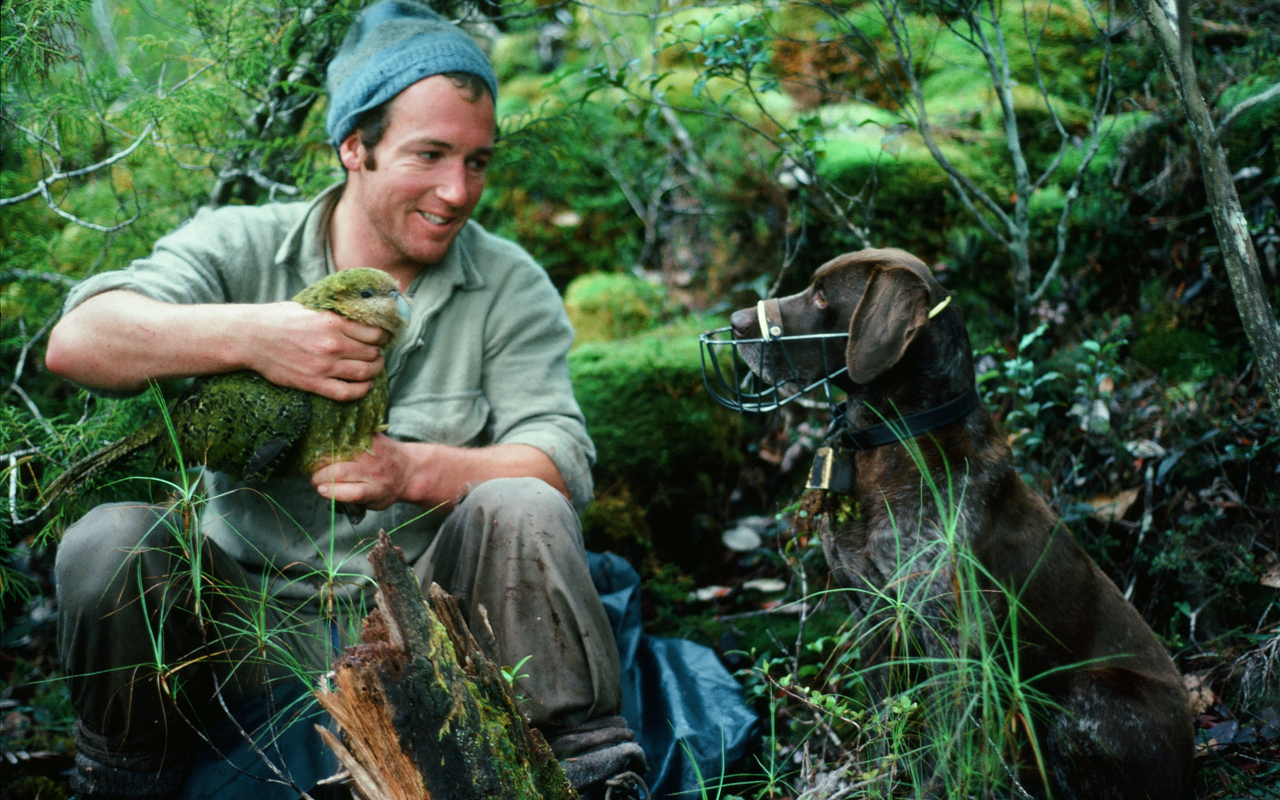
Bill Jarvie with a female kakapo that his tracking dog Adler had pointed for him on Rakiura Stewart Island in 1983. Photo: Supplied
He joined the Service as a trainee in late 1978 working in the fisheries arena on early work to manage fisheries in Rotorua, Taupo and around the Southland Lakes, mostly Wanaka.
In 1981, Bill was told he was going to Stewart Island with dog Adler to find kakapo.
It turned out to be a historic trip – Adler, at Bill’s command, finding the first ever kakapo nest in living history on the island.
“That was a gold star find – a nest of chicks,” he says.
After that they were finding the birds and placing transmitters onto them before they were sent to predator-free Codfish Island (Whenua Hou) where they could be safely isolated.
“I was stoked. I didn’t quite realise how important it was to find a nest of young kakapo."

Bill Jarvie and tracking dog Adler with a takahe in the snow. Photo: Supplied
"They’d been steadily killed by cats and were close to being wiped out.”
He then applied for the Wildlife Service job in Te Anau which he got the following year, likely, he reckons, due to that historic find as not long after arriving he and Adler were at it again.
Sent to help the Service’s takahe management programme in the Murchison’s where studied birds also had transmitters attached.
“It was quite rewarding work, especially with the kakapo being on the brink of extinction.
In 1987 the Wildlife Service, Lands and Survey and Forest Service all amalgamated into the new Department of Conservation – the Wildlife Service previously having the role of Acclimatisation Societies.
“These societies around the country were condensed down into Fish and Game regions and the Southland one took over responsibility for Fish and Game from the government,” Bill says.

Bill Jarvie, in 1984, with the first ever salmon to be spotted in the Pyke River, which he ran down as proof that they were migrating from, the sea up. Photo: Supplied
Bill’s overseen everywhere from Te Anau, Manapouri and Monowai, and the National Park across to Mavora Lakes and Mararoa.
He’s loved working with young anglers seeing the delight on their faces when they catch their first fish. “That’s very, very rewarding. There’s nothing like a child’s first fish,” he smiles.
Sadly, throughout New Zealand we’re now seeing second and third generation people getting used to poorer water quality, but thankfully so much Waiau catchment in Fiordland is still under the protection of the National Park.
“Our other saving grace is that the headwaters of our other rivers’ catchments are largely protected and the water from there keeps the quality high,” Bill says.
"We’re also very fortunate that progressive farmers are leading by example with their farm management protecting and creating habitat.”
Bill well knows that the long-term benefits of assisting landowners to put in wetlands, hunted or not, will be better water quality and buffer the impacts of weather extremes on our rivers and streams.”
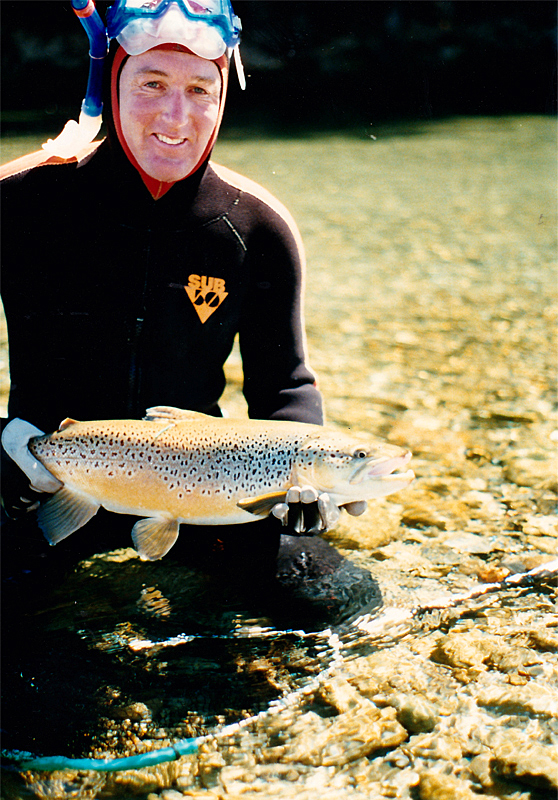
Bill Jarvie with an Oreti River brown trout. Photo: Supplied
It’s never been a battle to get compliance in his patch with no ‘fishy’ stories about leaving the licence at home.
“We have very good compliance in Southland, and people know that we are only funded by licences,” he says.
“There will always be some who will try it on, but it’s normally pretty obvious.”
One memory that makes Bill grin is of a man and son entering their chinook salmon in a fishing competition restricted to Lake Te Anau only.
“Dad swore it was from Te Anau, with the son proudly and repeatedly saying, ‘We caught it by the power station!’
"Oh dear, no entry!” chuckles Bill.
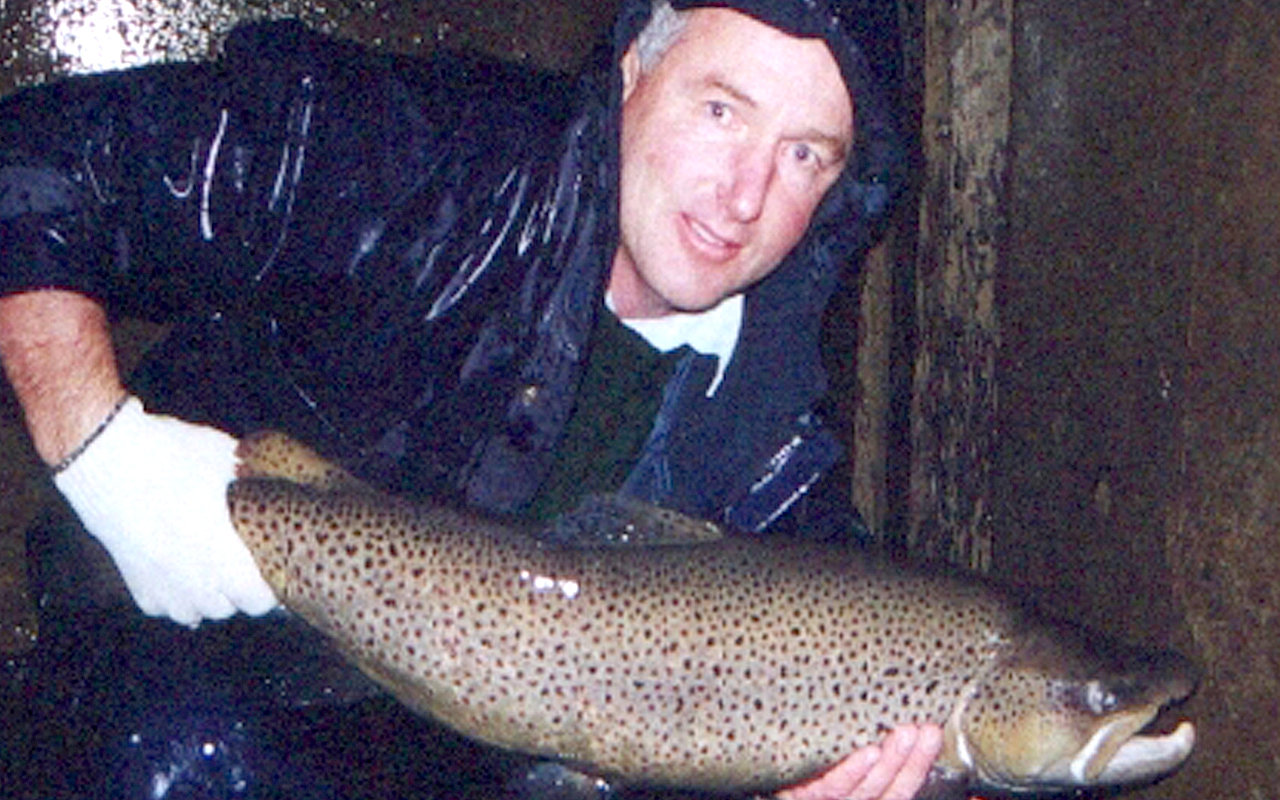
Bill Jarvie with a 15lb brown trout, trapped as part of monitoring the Mararoa Weir's fish pass' effectiveness. Photo: Supplied
Colleagues say throughout his career, Bill’s been “a passionate advocate” for the health of the Waiau River and its tributaries, and Lakes Te Anau, Manapōuri and Monowai through his involvement with the Lake Guardians and Waiau Working Party.
This is in addition to his work directly through Fish & Game advocacy.
Bill, colleague Stu Sutherland and Dr Cathy Kilroy from NIWA, were the first to discover Didymo in New Zealand.
“During a preliminary periphyton survey on the Lower Waiau River their keen observation and years of experience meant they immediately recognised the strange growth of algae as something foreign,” Southland Fish and Game staff say.
“Little did Bill appreciate just how familiar Didymo was to become, going on to develop significant expertise that other agencies have relied on.”
For more than a decade, he’s led Fish and Game’s monitoring of periphyton and didymo in the Waiau River to support recreational flow management for the benefit of river users.
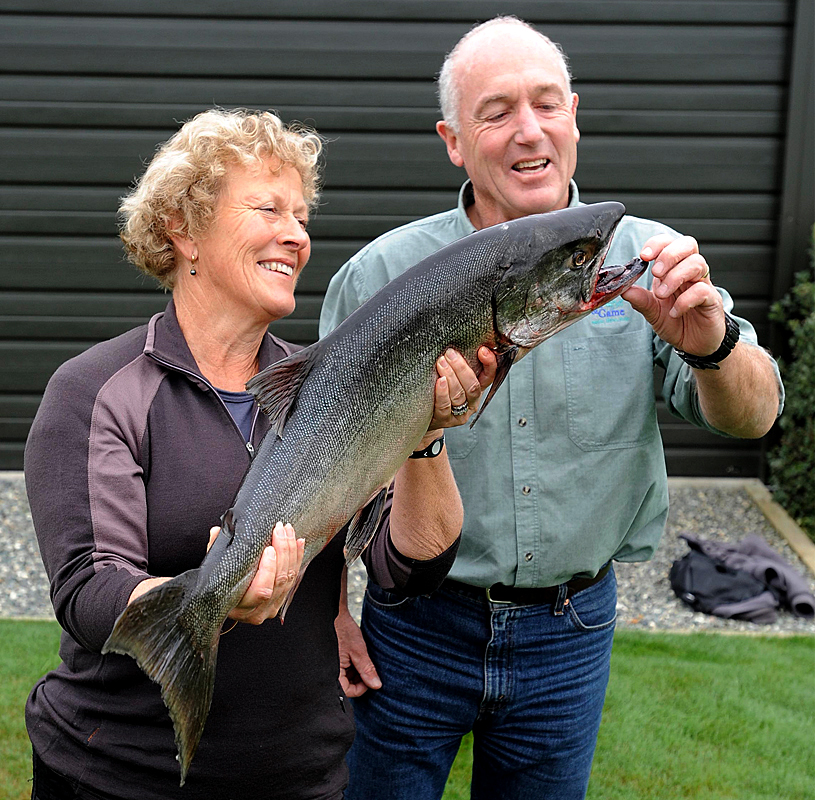
Shona Elder proudly shows Bill Jarvie a 12lb sea run chinook (salmon) she caught in Lake Te Anau, by the mouth of the Upukerora River. Photo: Supplied
He's also managed Southland Fish and Game’s team of honorary rangers, responsible for recruitment and training, as well as liaison for offences and prosecutions.
He’s the point of contact for Police to organise their joint compliance operations with Fish and Game during duck hunting season.
Fish and Game has enjoyed a close working relationship with Meridian Energy which is the hydro generator for the Manapouri Te Anau system – important at this time of year with hundreds of rainbow trout spawning in the Upper Waiau.
“The flow is controlled by them, so we try not to allow any dewatering or drying out where there’s a redd (where the eggs are laid) in the riverbed,” Bill says.
Bill’s constantly liaising with Meridian, keeping up to date on the status for spawning.
He’s not entering into the debate about the future of Te Anau’s Bird Park other than to say it originally began as a fish hatchery due to the beautiful spring water which rises there.

Bill Jarvie releasing rainbow trout fingerlings into Lake Thomas (a 'Put and Take' fishery). Photo: Supplied
“Hundreds of people have come to get spring water from there over the years via the tap we provide for them."
"People coming up from Invercargill to fill 20-litre containers,” he says.
While other sectors may be cutting back, Bill says there’s no shortage of work for Fish and Game in Te Anau.
“This role will perhaps develop. It will always be needed,” he says.
“The value of this environment and how much use it gets is vastly important to New Zealand, so we need to manage it.”
Just turned 66, Bill’s happy to hand over the reins and spend more time with family and tending his rural block on, fittingly, Kakapo Road, outside Te Anau.
“We’ve got a good view of two rivers and a lake so I will still be keeping an eye on things,” he grins.
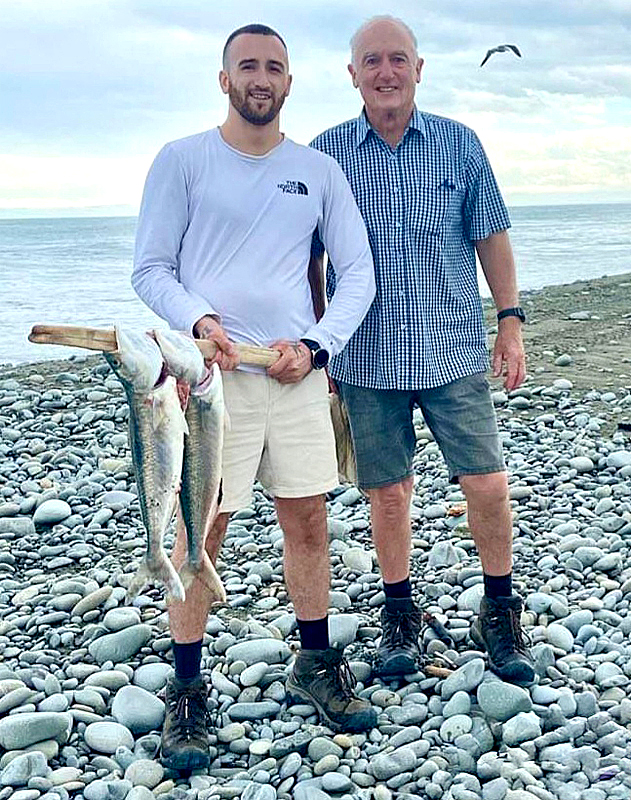
Bill Jarvie (right), with son Hamish, with kahawai destined for the smoker. Photo: Supplied
Sue Fea is a senior journalist with more than 40-years experience covering police, social and general news in the southern regions.